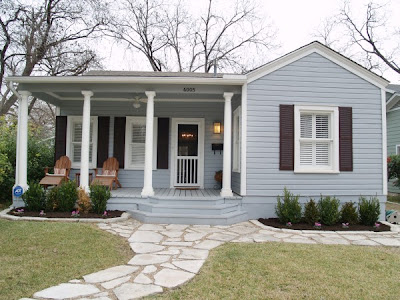
What’s going on in Rosedale? Some of you know others may not…what is Rosedale and where is it? - Rosedale is a great little neighborhood in north-central Austin near MoPac Highway. It is bounded by Lamar Boulevard to the east, Shoal Creek to the west, Hancock Drive to the north, and 38th Street to the south. Rosedale contains some 1,200 households, as well as a park, a library, and a medical complex nearby.
Built on farm and dairy land during the late 1800's and early 1900's, Rosedale has preserved many of its original houses and architecture. The large trees which provide shade to the neighborhood are legacies left by residents from the early 1900s. Rosedale, while paying homage to the past, has a new vibrancy as well. New homes, remodels and businesses make Rosedale a neighborhood firmly rooted in the present without loosing it’s historical charm.
One of the central features of the Rosedale neighborhood is Ramsey Park, found between 42nd and 44th streets on Rosedale Avenue. This 5-acre park has a swimming pool, tennis and basketball courts, playground, and numerous picnic tables. Ramsey Park is a popular place for residents to gather, exercise or relax.
The Rosedale community is very active, led by a well-organized neighborhood association. Formed in the 1970s following successful efforts by area residents to stop the closure of neighborhood Fire Station #12, the Rosedale NA sponsors neighborhood activities, advocates local positions on city issues, and works to promote the beauty and safety of Rosedale.
Alright here’s the deal- There are currently 16 homes available in the Rosedale neighborhood with 7 other under contract. Over the past 3 months 6 homes have sold. With this rate of absorption there is 8 months of inventory. Equilibrium is 6 months, so this number is a little high, but not bad.
Sales in Rosedale were a bit sluggish in December and January with 4 and 3 respectively. The current environment is much brighter. 7 homes under contract is really exciting, especially for the size of this neighborhood. This shows a sharp increase in activity and looks like it could indicate a promising summer. The average list to sale price is a very solid 95% (original list to sale is also 95%). The homes under contract found their buyers on average in 25 days (the homes that sold did so in 25 days!)! Buyers are getting back into the market and they are not wasting time. Rosedale sellers have to be pleased and buyers know that the good inventory goes fast.
This bodes well for Rosedale and the summer should be busy.









